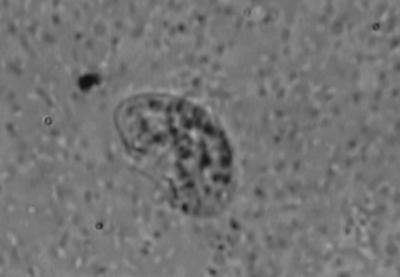Alarming Surge in Amoebic Encephalitis in Kerala
Amoebic encephalitis has recently claimed the lives of two young children in Kerala, sparking urgent warnings from health officials. This rare but fatal central nervous system infection, caused by the brain-eating Naegleria fowleri amoeba, poses a severe threat, particularly during the warm months when water activities are popular.

Image source: Primary Meningoencephalitis by Naegleria fowleri: First Reported Case from Mangalore, South India
Understanding the Disease
It typically begins one to nine days after exposure to contaminated water, with symptoms escalating rapidly. Early symptoms of amoebic encephalitis include severe headache, fever, nausea, vomiting, and stiff neck, which can progress to confusion, loss of balance, seizures, hallucinations, sensitivity to light, and coma. If not detected and treated early, it can lead to severe brain swelling and death within days.
Types and Treatment
There are two types of amoebic encephalitis: primary amebic meningoencephalitis (PAM) and granulomatous amebic encephalitis (GAE). While antimicrobial therapy is the main treatment, the mortality rate remains alarmingly high, above 90%. This highlights the critical importance of early detection and prevention.
Safety Precautions
Parents in Kerala are urged to take stringent precautions to protect their children from it. Experts advise avoiding swimming, diving, or submerging in potentially contaminated water, especially for immunocompromised individuals. Precautionary measures can significantly reduce the risk of contracting amoebic encephalitis and save lives.
The tragic deaths from it in Kerala serve as a grim reminder of the dangers posed by this deadly infection. By understanding the risks and taking appropriate precautions, families can safeguard their loved ones from the life-threatening effects of amoebic encephalitis. Stay informed, stay safe, and protect your family from this rare but fatal threat.
